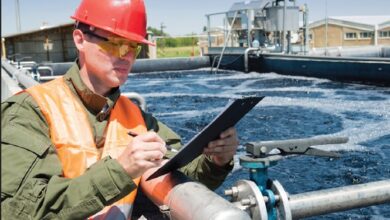What is Special Education inclusive education and special education teacher
Special Education
Special education is understood to be the type of school education offered preferably in the regular education network, for students with disabilities, global developmental disorders and high abilities or giftedness” .
It is noteworthy that it is not offered only in regular schools, as specialized educational institutions (schools for blind or deaf people) must also have this educational approach. Furthermore, the teaching is the same as that seen in the regular school, but it is adapted to meet the needs of these students .
To serve students, it is essential that the educational institution has accessibility resources in the physical premises, as well as trained teachers. Another point of attention is that it must also include students who need 24-hour medical care , and therefore cannot attend school.
Special Education or Inclusive Education is about education aimed at people with physical, hearing, visual, intellectual and multiple disabilities, developmental disorders, high abilities and giftedness. The service of each student is exclusive and specific, varying according to their conditions.
The objective is to adapt the educational system in order to provide access to education for people with disabilities, whether in regular schools or special schools.
What is inclusive education?
The debate on inclusive education has grown in recent years. It is an educational model that aims to guarantee access to school, regardless of whether or not the student has some type of disability. In this way, from Kindergarten to Higher Education, everyone participates in the teaching-learning process in the same environment .
In addition, social class, color, race, culture (indigenous, quilombola and riverside peoples) are also taken into account. That is, the main objective of inclusive education is to value the heterogeneity of students and promote equal opportunities , despite the fact that the learning process is unique for each person.
Inclusive education must be based on 5 principles:
- Every person has the right of access to education;
- Every person learns;
- Each person’s learning process is unique;
- Living together in the common school environment benefits everyone;
- Inclusive education concerns everyone.
Difference with inclusive education
Inclusive education cannot be confused with special education, that is the first point. Unlike inclusive education, special education comes in a wide variety of forms that include special schools, integration of children with specialized support, and smaller school units.
Since its inception, it has been a separate system of education for children with disabilities, outside regular education. This system is based on the notion that these children’s needs cannot be met in regular schools.
To better understand, there are three categories of special needs:
- Dependent: are those attended only in clinics, as they are totally dependent on services necessary for their current survival. These students are unable to have hygienic habits or get dressed, requiring 24-hour monitoring;
- Trainable: these are students who attend special schools, manage to defend themselves from dangers, share and respect their colleagues. These students already have the habit of hygiene, needing only help and supervision, in most cases, the delay is identified in the first years of life;
- Educable: these are students who attend special classes. They have enough vocabulary for daily life and the ability to adapt socially and personally. Generally, these children reach an age of mental development between seven and twelve years of age in adulthood.
What does a special education teacher do?
As there are several types of disability, the work of the Special Education professional is also diverse. In general, he acts as a teacher in public and private schools and Special Education schools. But, they can also work in hospitals, rehabilitation clinics and community centers.
In the school context, teachers may work specifically with students who are hard of hearing and deaf, have physical disabilities, mental disabilities, multiple disabilities or visual impairments.
In addition to preparing and teaching classes and administering tests and assignments, other functions assigned to Special Education teachers,
- Promote the education of students with special educational needs, teaching them to read and write in Portuguese and Braille, calculate, express themselves, solve problems and activities of daily living, develop skills, attitudes and values;
- Develop functional activities and programs for essential stimulation and education for young people and adults, assessing the educational needs of students;
- Carry out activities such as: planning, evaluating, preparing materials, researching and disseminating knowledge in the area; may direct and coordinate special education establishments.
How to make education inclusive?
The school that refuses to enroll a student with a disability , whether public or private, commits a crime provided for by law . Thus, it is essential that every educational institution is prepared to provide inclusive and quality education for these students. See some guidelines below.
Accessibility
The first step to make a school inclusive is to ensure accessibility in the most varied contexts of the educational institution , be it physical, social and/or pedagogical. Thus, it is essential to eliminate any type of barrier that may impede the teaching-learning of a student with a disability.
This means that the school needs to be prepared to receive students with physical disabilities or temporary reduced mobility (a student who had to have his leg bandaged, for example). In addition, it is necessary to carry out work to eliminate prejudices, stigmas and stereotypes with the entire school community.



